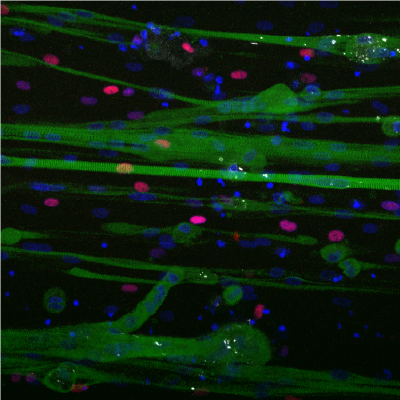
Development of Neuromuscular Junctions and Disease Models in a Dish for ALS
Motor neuron diseases (MNDs) are classified in four main groups in which amyotrophic lateral sclerosis (ALS) represents the most common form. Neuromuscular junctions (NMJs) form the critical synapses between skeletal muscle fibers and motor neurons enabling proper movement and motor function control. NMJ dysfunction is well known to be associated with devastating diseases including sarcopenia, dystrophies and amyotrophic lateral sclerosis. Approaches to counter NMJ loss have largely focused on preserving or replacing motor neurons.
Our inability to model and characterize the human NMJ during disease progression has prevented the ability to identify new targets to prevent NMJ degeneration. Interestingly, recent work has suggested that neuromuscular junction disruption is an early pathogenic event in ALS. Eventually the NMJ becomes completely lost during advanced stages of disease progression in ALS. Prevention of NMJ loss or dysfunction could extend the life of patients with devastating neuromuscular diseases including ALS. We are using human pluripotent stem cell models (2D and 3D) in a dish to study ALS and develop therapeutic strategies to counter ALS by preventing NMJ and muscle function loss.